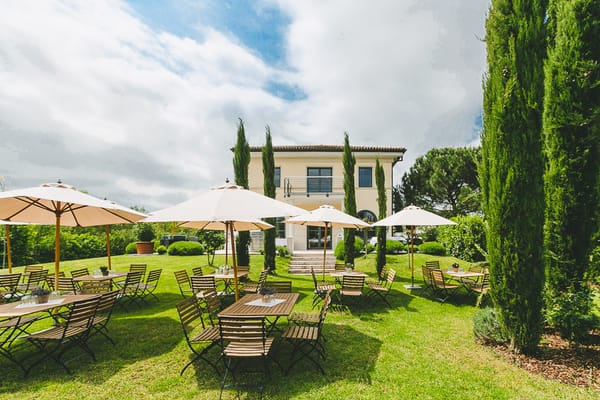Acidity – The Zing That Brings It All Together 🍋🍷
Acidity: the crisp, mouthwatering zing in wine. Discover how it lifts flavor, shapes balance, and gives wine its refreshing magic.

Welcome back to Spill the Wine, Tobi, and part three of our series on the five essential wine traits.
So far, we’ve explored Body—the weight of wine—and Sweetness—the unexpected complexity behind residual sugar.
Today we’re pouring into something that’s less about taste and more about feel. Something that brings a wine to life, refreshes the palate, and plays the role of quiet hero in almost every great wine.
Let’s talk about Acidity.
It’s the tingle, the snap, the zing. It’s the reason a Riesling can feel like biting into a green apple, or a Sauvignon Blanc can cut through a summer day like a breeze.
And when it’s done just right, acidity makes wine feel alive.
“Acidity is the backbone of wine - it holds everything up, even when you don’t see it.”
— Tobi, mid-sip and thinking too hard
What Is Acidity in Wine?
Acidity refers to the level of acid compounds in a wine - primarily tartaric, malic, and citric acids. These acids come from the grape itself and are preserved or altered during fermentation.
The amount of hydrogen ions (how acidic a liquid is) is measured by pH.
Most wines fall between pH 3.0 and 3.6, which means they’re on the acidic end of the spectrum:
| Substance | pH Value |
|---|---|
| Lemon juice | ~2.0 |
| Coca-Cola | ~2.5 |
| Dry white wine | ~3.0 |
| Red wine | ~3.4 |
| Milk | ~6.5 |
The lower the pH, the higher the acidity.
Because pH is a logarithmic scale, a wine with pH 3.0 is 10x more acidic than one at 4.0, and 100x more acidic than one at 5.0.
Yes - your tongue can actually detect differences as small as 0.1 pH with practice.
How Acidity Feels in the Mouth
Acidity is a feeling.
It's less about taste and more about sensation.
Imagine sipping lemonade:
Your mouth waters. Your jaw might clench a little. You get that crisp, zingy brightness that makes you want another sip.
That’s acidity.
Wines with good acidity often feel:
- Fresh
- Lively
- Crisp
- Bright
- Clean
Without acidity, wine can feel:
- Flabby
- Flat
- Heavy
- Lifeless
With too much acidity?
It becomes sour, sharp, or aggressive - like biting into an underripe lime.
Acidity on a 1–5 Scale
To help you track and describe what you’re tasting, here’s a simple scale I use:
| Level | Description | Sensation Example |
|---|---|---|
| 1 | Low acidity | Soft, mellow, almost creamy |
| 2 | Mild acidity | Smooth with just a hint of lift |
| 3 | Balanced acidity | Noticeable, refreshing |
| 4 | High acidity | Sharp, clean, zesty |
| 5 | Very high acidity | Electric, mouthwatering, tight |
A wine at level 5 might remind you of fresh lime juice or tart green apples.
A level 1 wine feels smooth and rounded - like a soft Merlot or creamy Chardonnay.
Why Acidity Matters
1. Balance
Acidity balances out sweetness, alcohol, and richness. It creates harmony and structure.
2. Food Pairing
Acidic wines are incredibly food-friendly.
They:
- Cut through creamy dishes
- Balance salty flavors
- Refresh the palate between bites
- Handle spice with surprising grace
Think of acidity as the lemon wedge in your meal - it brightens and sharpens everything around it.
3. Aging Potential
High-acid wines often age better.
Acid is a preservative. It keeps wine fresh and vibrant for years (or decades) when stored properly. That’s why great Rieslings or vintage Champagnes can last 20+ years.
Where to Find Acidity in Wine
Cool-climate wines tend to be more acidic because grapes retain more of their natural acids when ripening slowly. You’ll often find higher acidity in:
- 🇩🇪 German Riesling
- 🇫🇷 Sancerre / Loire Sauvignon Blanc
- 🇪🇸 Albariño
- 🇮🇹 Verdicchio
- 🇨🇭 Chasselas
- 🇫🇷 Champagne
Even some red wines have a refreshing acid backbone - especially Pinot Noir, Nebbiolo, or a chilled Gamay.
Tobi’s Tip: Learn by Feeling
The next time you taste wine, don’t focus on the flavor first.
Just observe how your mouth reacts:
- Do you salivate?
- Does your tongue tingle or feel alert?
- Is your mouth watering even after swallowing?
That’s acidity.
And once you start feeling it, you’ll never miss it again.
🎶 Wine & Music Moment
Some wines, like some songs, don’t shout for your attention.
They’re gentle. Tender.
But behind their softness, there’s this clear, bright current that holds them together. That’s acidity—and that’s this song:
🎵 “Âme câline” – Michel Polnareff
I stumbled upon it one evening while tasting a chilled glass of Vermentino. The sky was fading, the glass was sweating, and this melody floated through the speakers. There’s something sweet and melancholy in it - just like a wine with subtle acidity. Not sour, not sharp, but softly shimmering.
Pair it with:
- A dry Riesling from the Pfalz
- A cool Chenin Blanc
- A Vinho Verde with gentle bubbles and even gentler curves
Let the wine flow. Let the song stay a little longer.
Not everything has to be bold to be unforgettable.
Coming Next…
Next up in our series: Tannins—the dry, grippy, sometimes misunderstood part of red wine. We’ll talk about where they come from, how they feel, and why they’re essential to structure, age, and personality.
Until then—
Are you someone who loves bright, crisp wines?
Or do you prefer something smooth and mellow?
Share your thoughts, your favorites, or even your worst “too sour” wine memory in the comments or by message.
Stay bright. Stay soft. Stay open.
– Tobi 🍷




